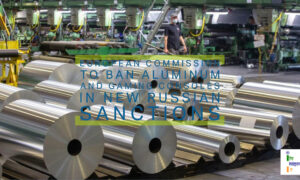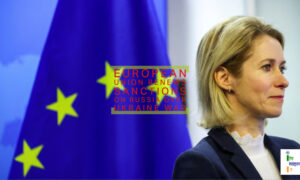
European Commission approves € 55 million German measure to support ArcelorMittal’s green steel demonstration plant
The European Commission has approved a € 55 million German measure to support ArcelorMittal Hamburg GmbH in setting-up a demonstration plant for the production of green steel using renewable hydrogen.
The measure will contribute to the achievement of the European Union (E.U.) Hydrogen Strategy and the European Green Deal targets, while helping to reduce dependence on Russian fossil fuels.
The main objective of the project is to apply technology aimed at reducing greenhouse gas emissions in ArcelorMittal’s green steel production processes. The plant will have an annual capacity of 100,000 tonnes of direct reduced iron, a key input for steel production.
Speaking on the occasion, the Executive Vice-President of the European Commission for a Europe fit for the Digital Age (Competition) – Margrethe Vestager said, “This €55 million measure is an important step towards a more sustainable steel industry in Germany and the EU. By using renewable hydrogen, the green steel plant will contribute to reducing emissions in an energy-intensive sector and provide valuable insights for scaling up this technology across the EU. Today’s decision supports the EU’s transition to a net zero economy in line with the European Green Deal objectives.”
ArcelorMittal will use the experience gained at the demonstration plant to decarbonize its steel production in the E.U. on a larger scale. Moreover, ArcelorMittal has committed to share its technical know-how with other European steel producers. The demonstration plant is envisioned to start operations in 2026. Once completed, the project is expected to avoid the release of over 700,000 tonnes of carbon dioxide in total.
The European Commission assessed the measure under E.U. State aid rules, in particular Article 107(3)(c) of the Treaty on the Functioning of the European Union (‘TFEU’), which enables Member States to support the development of certain economic activities subject to certain conditions, and the Guidelines on State aid for climate, environmental protection and energy 2022 (‘CEEAG’).
The European Commission found that the project is amongst the early adopters of an innovative technology in its sector. It will also facilitate the development of economic activity, in particular the production of green steel. At the same time, it supports the objectives of key E.U. policy initiatives such as the European Green Deal, the EU Hydrogen Strategy and the REPowerEU Plan. The aid has an ‘incentive effect’, as the beneficiary would not carry out the investments in green steel production without the public support.
The measure has a limited impact on competition and trade within the EU. Furthermore, if the project turns out to be very successful, generating extra net revenues, the beneficiary will return part of the aid received to Germany (claw-back mechanism).







